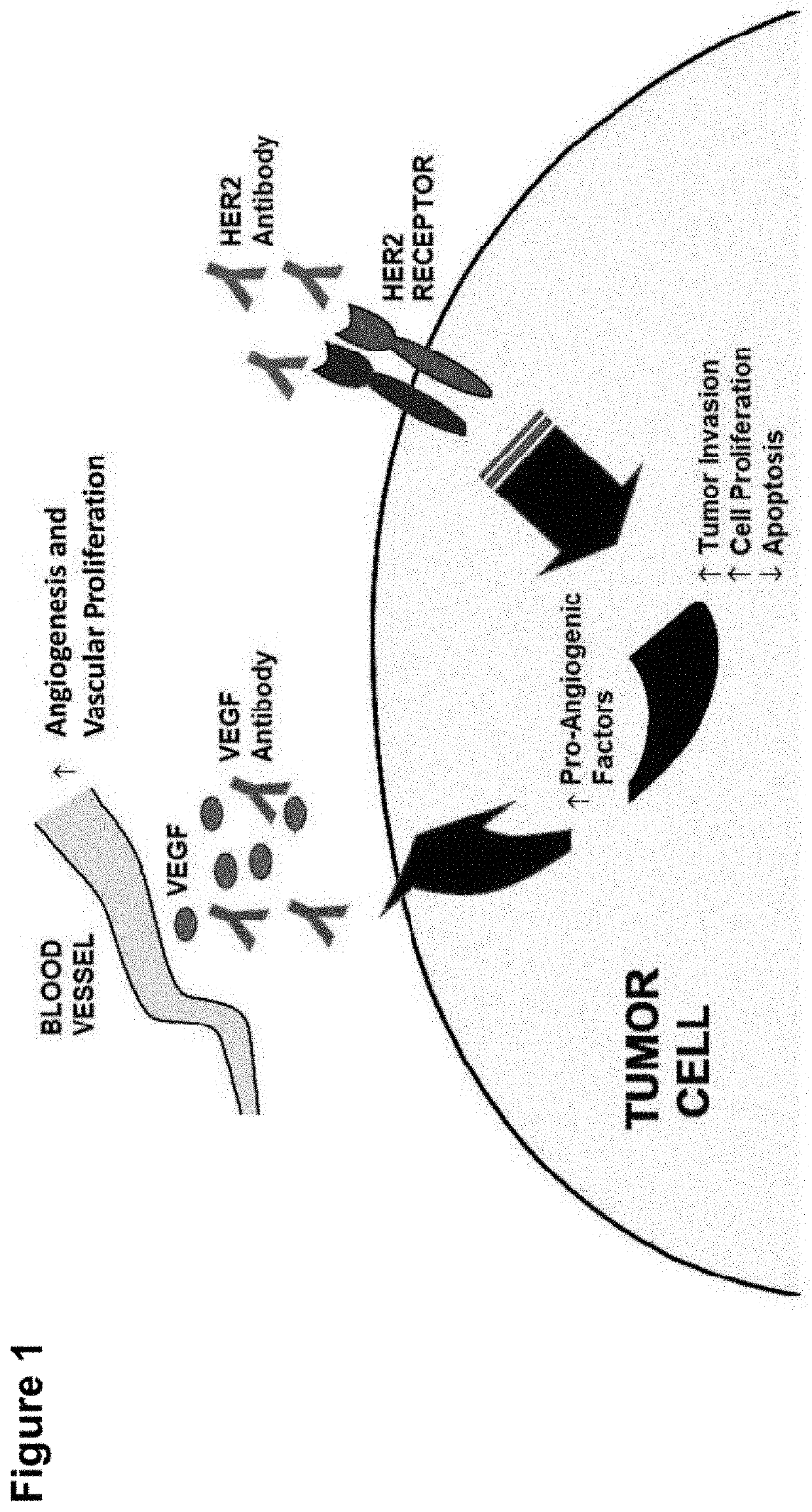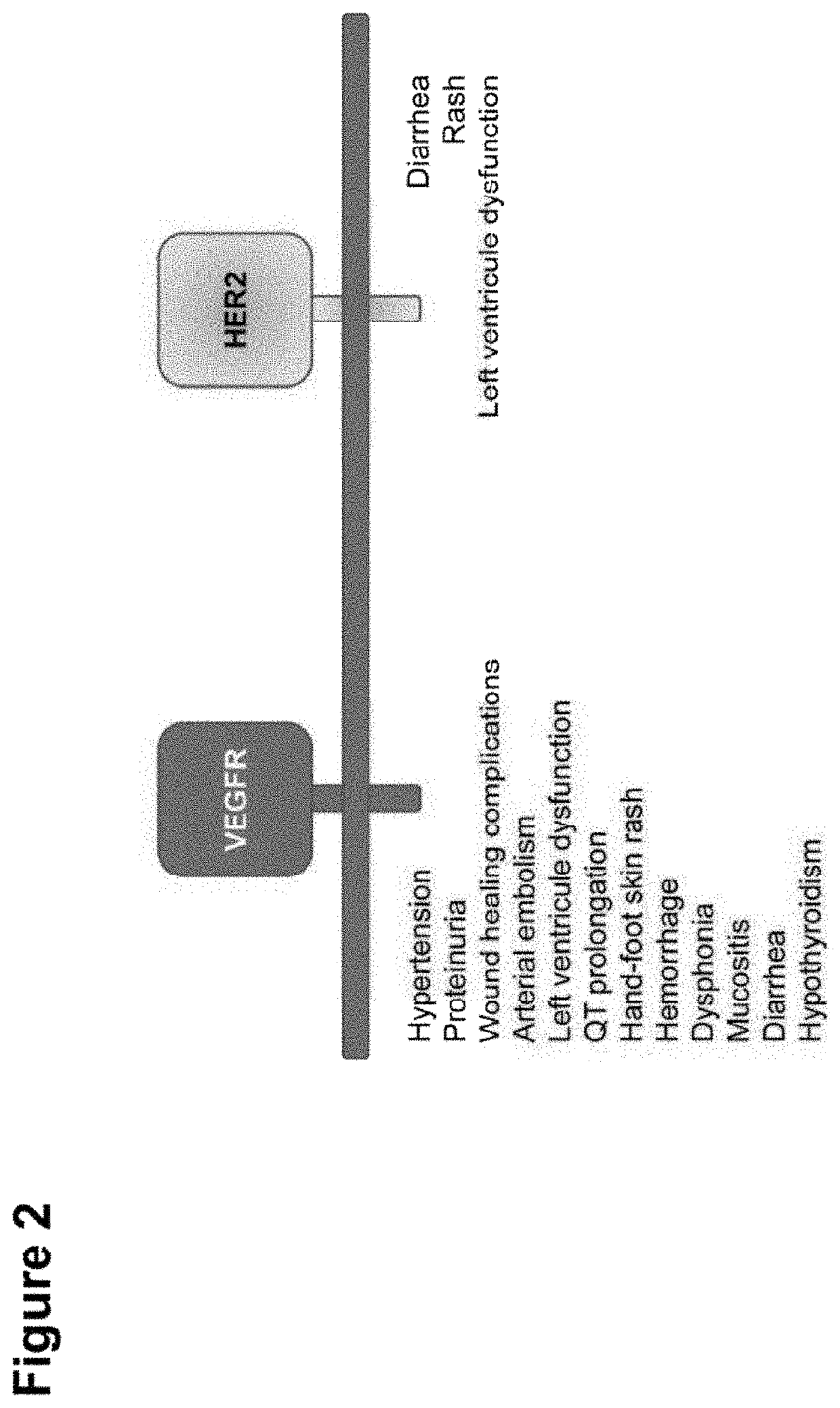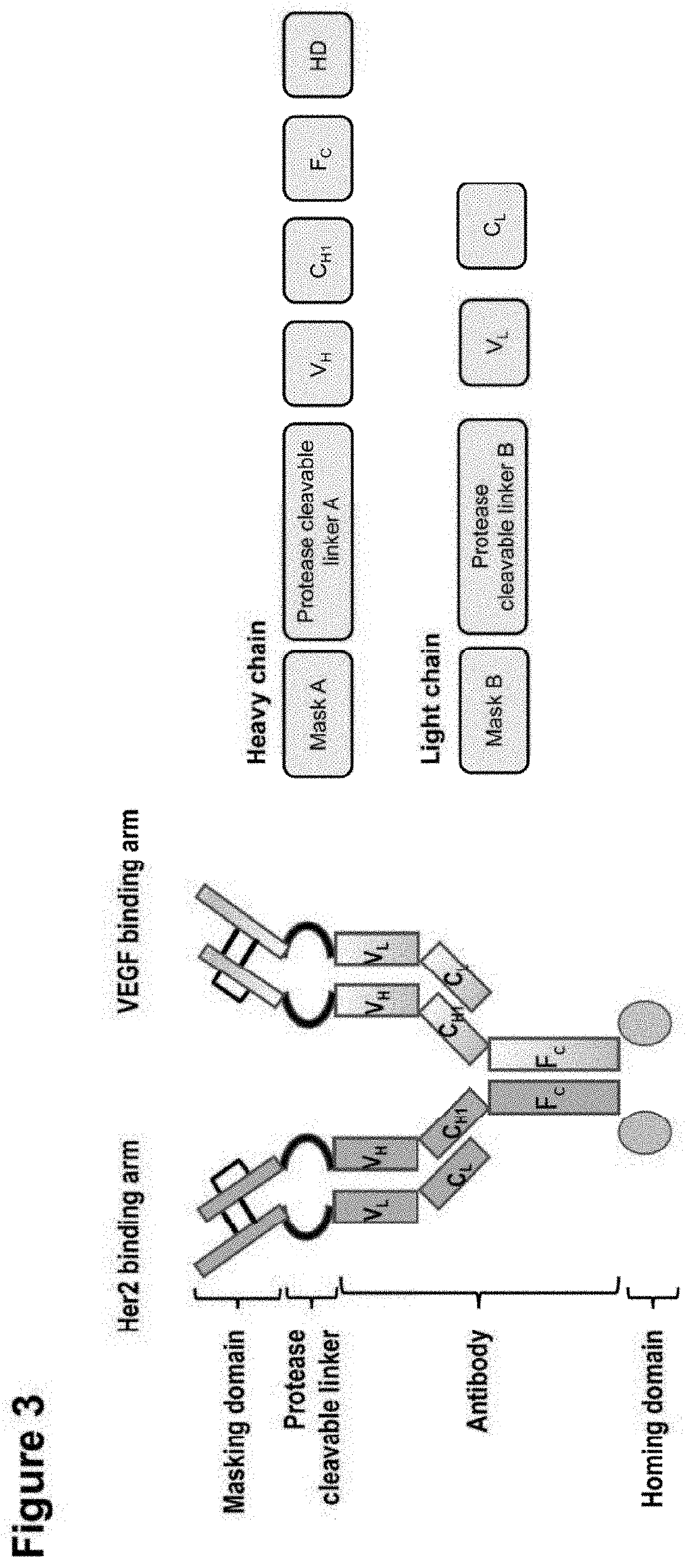Shielded and homing bispecific antibody that simultaneously inhibits angiogenic pathway targets and her2 family proteins and uses thereof
a bispecific antibody and shielding technology, applied in the field of biomedicine, can solve the problems of high incidence of interstitial pneumonitis toxicity of molecule, limited clinical success of dual epitope anti-her2 molecule, and inducing tumor cell death. achieve the effect of better strategy for containing
- Summary
- Abstract
- Description
- Claims
- Application Information
AI Technical Summary
Benefits of technology
Problems solved by technology
Method used
Image
Examples
example 1
n of HER2 x VEGF Bispecific Antibodies
[0239]A capped anti-HER2 and capped anti-VEGF antibody were employed to evaluate the feasibility of preparing a bispecific antibody. Heavy chain and light chain constructs expressing anti-HER2 and anti-VEGF shielded parental mAbs were prepared. Plasmids encoding heavy chains and light chains of these anti-HER2 and anti-VEGF masked antibodies were co-transfected into Expi293F cells following the transfection kit instructions (Thermo Scientific). Cells were spun down five days post transfection, and the supernatant were passed through a 0.2 μm filter. The purifications of expressed masked antibody supernatants were carried out by affinity chromatography over protein A agarose columns (GE Healthcare Life Sciences). The purified masked antibodies were buffer-exchanged into DPBS, pH7.2 by dialysis, and protein concentrations were determined by UV absorbance at 280 nm.
[0240]For controlled Fab-arm exchange, equal molar amounts of both parental antibodi...
example 2
ion of Formation of HER2 x VEGF Bispecific Antibody
[0243]The formation of shielded HER2 x VEGF bispecific antibodies and their corresponding HER2 x VEGF antibodies without the masking domain were assessed by Cation Exchange (CEX) chromatography. 20 μg of bispecific antibodies and their corresponding parental antibodies were loaded onto Bio SCX NP5 ion exchange column (Agilent). The profiles of peak migration for these antibodies were shown in FIG. 6. In all the cases, the bispecific antibody migrated as a major protein peak with the retention time in between the migrated major peaks of the two parental antibodies, indicating the formation of bispecific antibodies. Further calculation of the area under the curve (AUC) indicated that over 90% of the parental antibodies formed the bispecific antibodies by the Fab-arm exchange (FIG. 6).
[0244]ELISA-based binding assays were also employed to evaluate the formation of HER2 x VEGF bispecific antibodies without the masking domain. In this as...
example 3
of Shielded HER2 x VEGF Bispecific Antibodies with IGF2-Based Masking Domain with Protease
[0245]In vitro protease cutting assays were set up to evaluate whether the IGF2-based masking domain can be removed from the shielded HER2 x VEGF bispecific antibodies by proteases. For protease MMP2, recombinant human MMP2 was activated by incubating with p-aminophenylmercuric acetate (APMA) according to manufacturer's instruction (R&D Systems). 10 μg of shielded HER2 x VEGF bispecific antibodies were incubated with 50 ng of activated MMP2 overnight at 37° C. The digestions of the shielded antibodies were evaluated by SDS-PAGE under the reduced condition as shown in FIG. 8.
[0246]It was observed that all the shielded antibodies had heavy chains and light chains with the molecular weights slightly bigger than the respective unshielded antibodies because of the fusion of the IGF2-based masking domain with 10 kDa molecular weight to the native antibody heavy chain and light chain, respectively. By...
PUM
| Property | Measurement | Unit |
|---|---|---|
| concentration | aaaaa | aaaaa |
| concentration | aaaaa | aaaaa |
| equilibrium dissociation constant | aaaaa | aaaaa |
Abstract
Description
Claims
Application Information
 Login to View More
Login to View More - R&D
- Intellectual Property
- Life Sciences
- Materials
- Tech Scout
- Unparalleled Data Quality
- Higher Quality Content
- 60% Fewer Hallucinations
Browse by: Latest US Patents, China's latest patents, Technical Efficacy Thesaurus, Application Domain, Technology Topic, Popular Technical Reports.
© 2025 PatSnap. All rights reserved.Legal|Privacy policy|Modern Slavery Act Transparency Statement|Sitemap|About US| Contact US: help@patsnap.com



